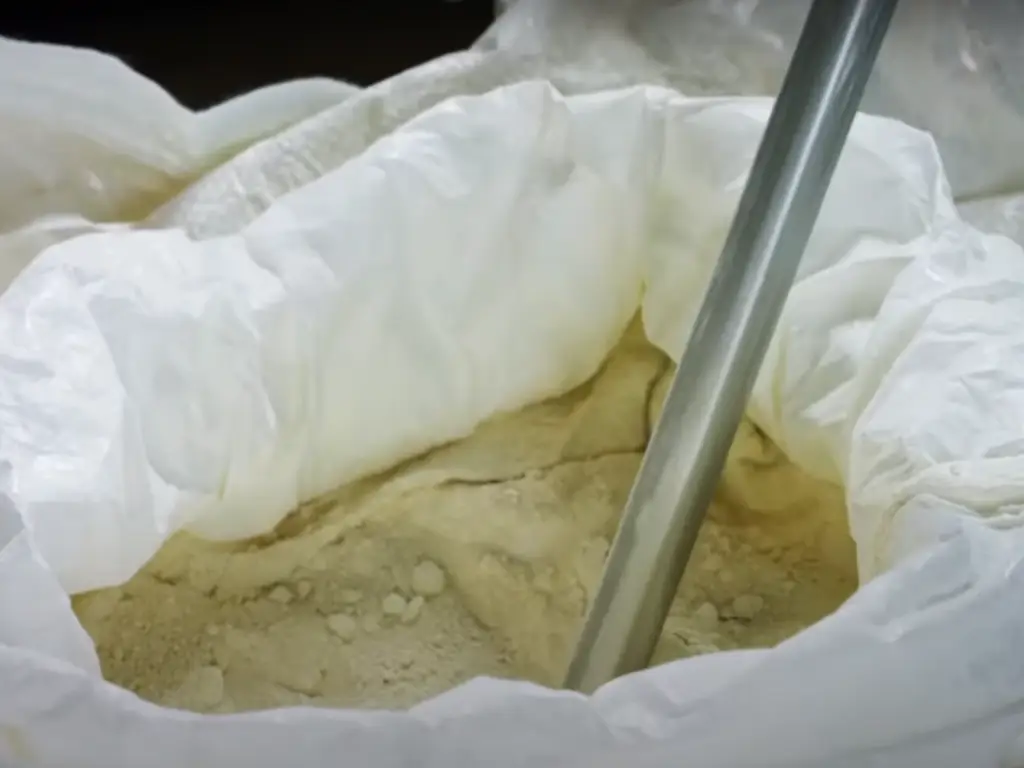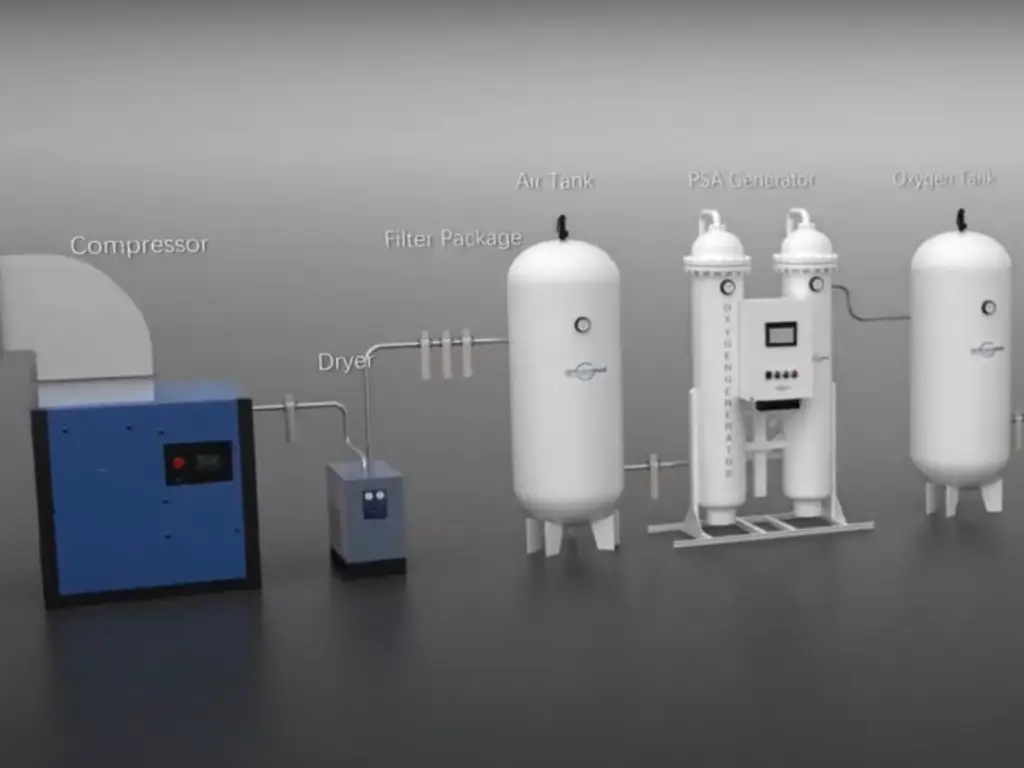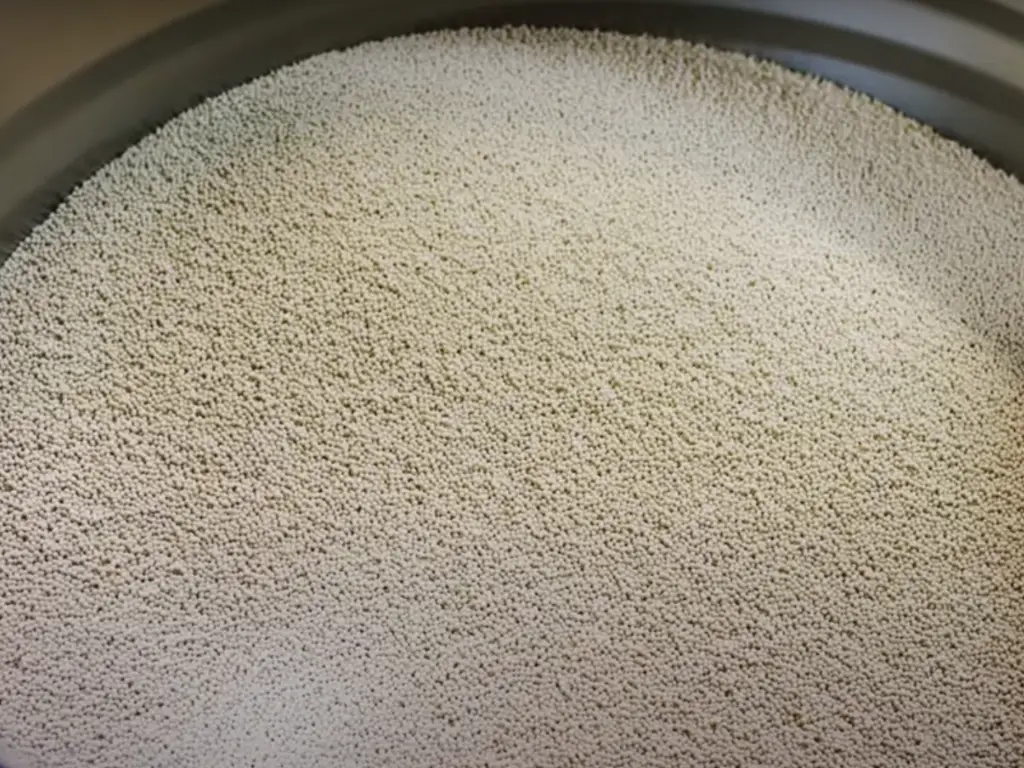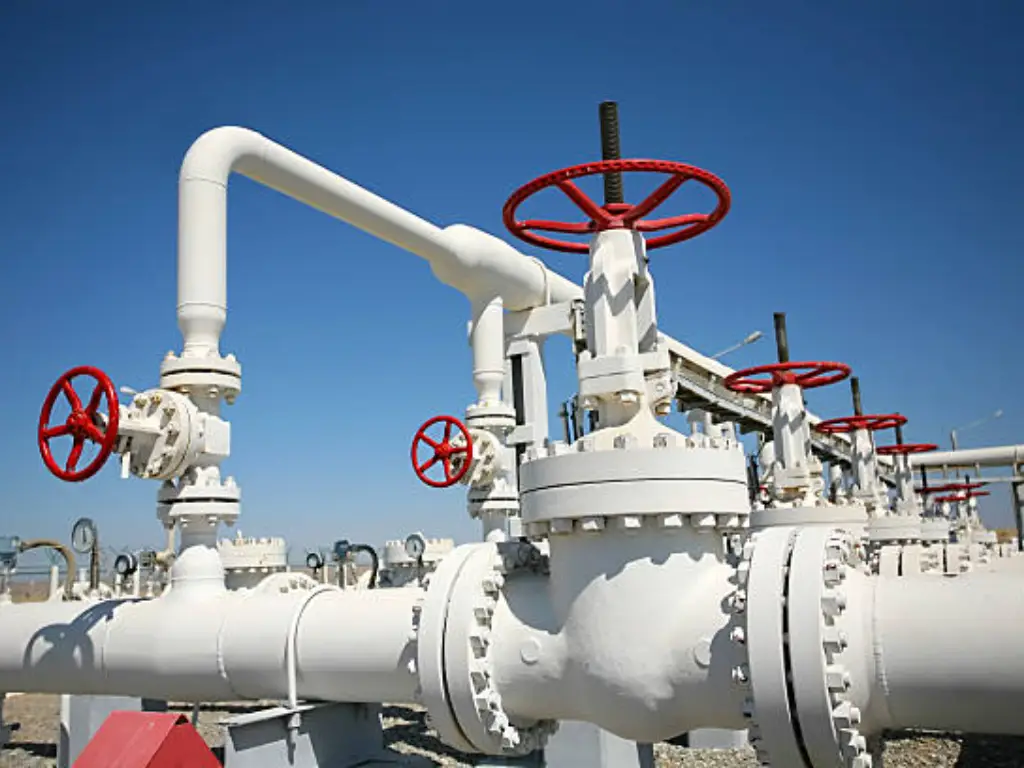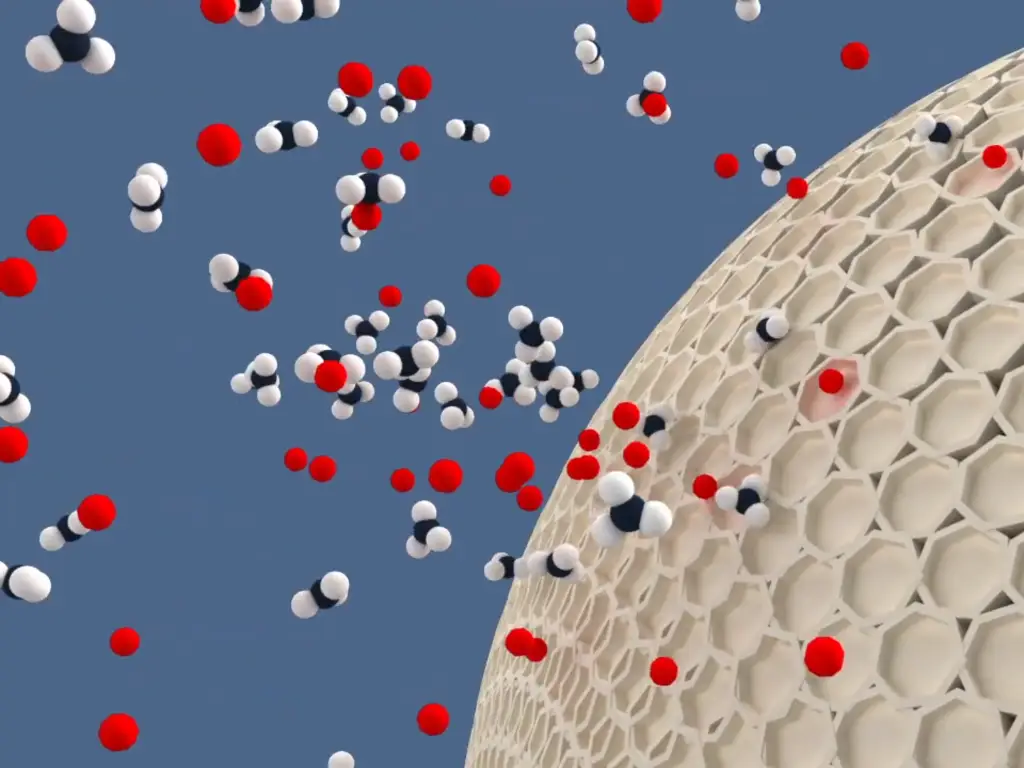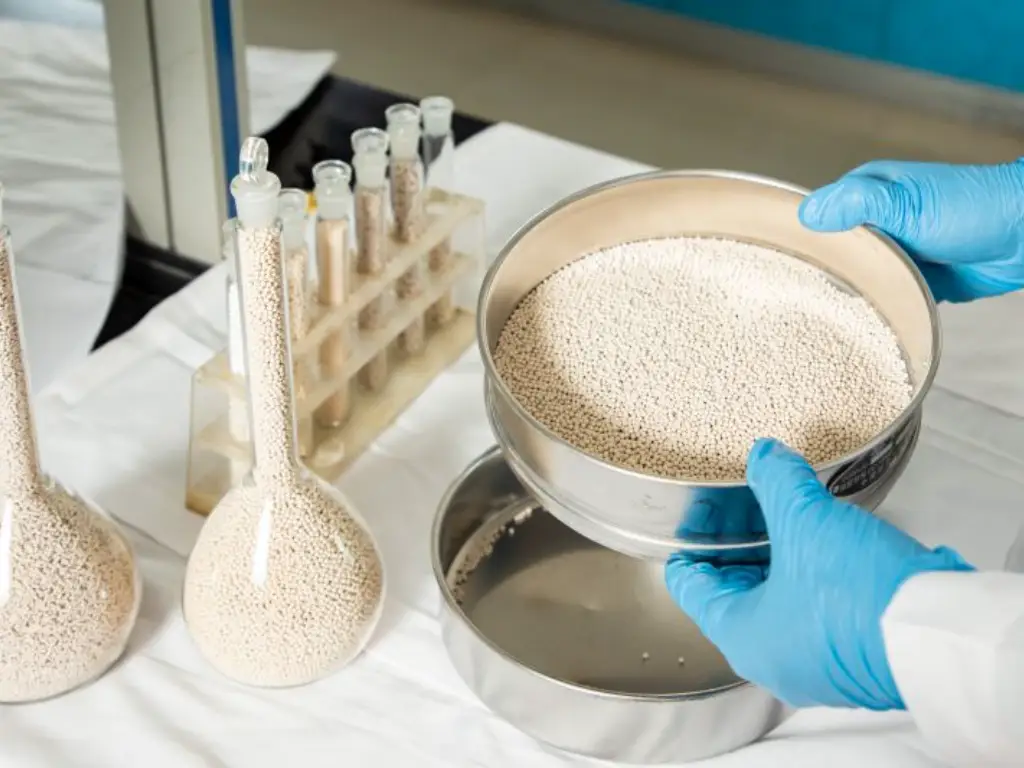What’s molecular sieve?
Molecular Sieves are synthetic crystalline zeolites in which the atoms are arranged in a definite pattern. Internally, the structure has many cavities inter-connected by smaller pores of a uniform size. These pores are only able to accept and pass to the cavities molecules of the same and smaller size, hence the name molecular sieve.
The water vapour adsorption characteristics are very different from those of silica gel. Molecular sieves can adsorb up to approximately 20% by weight of water before the relative humidity of the surrounding air increases significantly. Any further increase causes a large rise in relative humidity.
These characteristics enable molecular sieves to maintain very low dew-point (-50°C for 10% by weight of adsorbed water). The material also has the ability to rapidly adsorb water vapour and is capable of maintaining high adsorption efficiency at high temperatures of up to 90°C
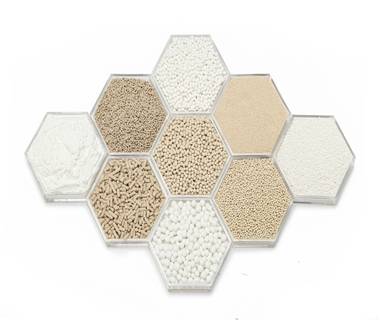
Molecular sieve is an aluminosilicate inorganic compound, which can withstand high temperature and has good thermal stability, which provides convenience for regeneration and can be reused many times. The skeleton is not decomposed by microorganisms or the like. The main components of the skeleton part of the molecular sieve are silicon-oxygen tetrahedron and aluminum-oxygen tetrahedron. Since the valence of aluminum is 3, the valence of one oxygen atom in the aluminum-oxygen tetrahedron AlO4 is not balanced, so that the entire aluminum-oxygen tetrahedron is banded. It has a negative charge. In order to maintain electrical neutrality, there must be positively charged metal ions in the vicinity of the aluminum oxide tetrahedron to offset its negative charge. A strong electric field is generated between the positively charged metal ions and the negatively charged molecular sieve framework, which has a huge impact on the adsorption performance of the molecular sieve. The adsorption capacity of molecular sieves for polar substances is much stronger than that of non-polar substances. At the same time, due to the effect of a strong electric field, for substances containing double bonds or large π bonds, they also have considerable adsorption capacity through induced polarization. Generally, the more charge the cation carries, the smaller the ionic radius, the stronger the electric field generated, the greater the induction effect on double bonds, and the greater the adsorption capacity for such substances.
Molecular sieves are used as solid adsorbents in the chemical industry, and the adsorbed substances can be desorbed, and the molecular sieves can be regenerated after use. Also used for drying, purification, separation and recovery of gases and liquids. Since the 1960s, it has been used as a cracking catalyst in the petroleum refining industry, and now a variety of molecular sieve catalysts suitable for different catalytic processes have been developed.There are two types of molecular sieves: natural zeolite and synthetic zeolite.① Most natural zeolites are formed by the reaction of volcanic tuff and tuffaceous sedimentary rocks in marine or lacustrine environments. At present, there are more than 1000 kinds of zeolite ores, among which 35 are more important, the common ones are clinoptilolite, mordenite, erionite and chabazite. Mainly distributed in the United States, Japan, France and other countries, China also found a large number of mordenite and clinoptilolite deposits, Japan is the country with the largest amount of natural zeolite mining.②Because natural zeolite is limited by resources, a large number of synthetic zeolites have been used since the 1950s.
What’s the common type of zeolite molecular sieve
Molecular Sieves are available in four primary generic forms, 3A, 4A, 5A and 13X. Each form has its own specific properties and applications, and all retain a polar preference for adsorption of water.
According to different pore size, molecular sieve is defined as 3A, 4A, 5A and 13X. They are applied to chemical, electronic, petrochemical, natural gas industries, etc.
The chemical formula of 3A, 4A, 5A, 13X
3A:2/3K₂O1₃·Na₂₂O·Al₂O₃·2SiO₂.·4.5H₂O
4A:Na₂O·Al₂O₃·2SiO₂·4.5H₂O
5A:3/4CaO1/4Na₂OAl₂O₃·2SiO₂·4.5H₂O
13X:Na2O·Al2O3·2.45SiO2·6.0H20
Molecular sieve’s operation is connected with its pore size. Their pore size are 0.3nm/ 0.4nm/ 0.5nm. These pores can adsorb the molecule smaller than them and the bigger it gets means larger adsorption capacity. And it’s the different pore sizes decide what kind of molecule it can adsorb. In short, only those molecule’s size under 0.3nm can be adsorbed by 3A MS. 4A and 5A both follow this principle too. Single molecular sieve can adsorb moisture at up to 22% of its weight when being used as a desiccant.
What’s different molecular sieve 3a 4a 5a 13x
3A molecular sieve mainly adsorbs water and is mainly used for drying petroleum cracked gas, olefin, refinery gas and oilfield gas, as well as desiccant in chemical, pharmaceutical, insulating glass and other industries. Mainly used for drying of liquids (such as ethanol), air drying of insulating glass, nitrogen and hydrogen mixed gas drying, refrigerant drying, etc.
4A molecular sieves are mainly used for drying natural gas and various chemical gases and liquids, refrigerants, pharmaceuticals, electronic data and volatile substances, purifying argon, and separating methane, ethane and propane. Mainly used for deep drying of gases and liquids such as air, natural gas, hydrocarbons, refrigerants; preparation and purification of argon; static drying of electronic components and perishable materials; dehydrating agent in paints, polyesters, dyes and coatings
5A molecular sieve is mainly used for natural gas drying, desulfurization and carbon dioxide removal; separation of nitrogen and oxygen to prepare oxygen, nitrogen and hydrogen; petroleum dewaxing to separate normal hydrocarbons from branched hydrocarbons and cyclic hydrocarbons. However, the large specific surface area and polar adsorption of renewable 5A molecular sieves can achieve deep adsorption of water and residual ammonia. The decomposed nitrogen-hydrogen mixture enters a dryer to remove residual moisture and other impurities. The purification device adopts double adsorption towers, one absorbs dry ammonia decomposition gas, and the other desorbs moisture and residual ammonia in a heated state (generally 300-350) to achieve the purpose of regeneration
13X molecular sieve, also known as sodium X type molecular sieve, is an alkali metal aluminosilicate, which has a certain basicity and belongs to a class of solid bases. 3.64A is less than 10A any molecule.13x molecular sieve is mainly used in Gas purification in the air separation unit to remove water and carbon dioxide.Drying and desulfurization of natural gas, liquefied petroleum gas and liquid hydrocarbons. General gas deep drying.

How is 3A and 5A made from 4A Molecular Sieve?
It is obtained by replacing sodium ions in the molecular sieve structure of 4A (sodium form of zeolite type A) with Potassium ions, so that the effective pore size is reduced to 3Å. 3A molecular sieve is mainly used as desiccant in oil cracking gas, Olefins, refinery gas, oil well gas, chemical industry, pharmacy, insulated glass, liquid drying (alcohol), insulated glass, nitrogen & hydrogen mixed gas drying, desiccant drying, refrigerants drying, etc. Moisture and molecules under 3Å can be adsorbed by 3A molecular sieve.
From this form, sieves of pore sizes 3Å and 5Å are obtained, exchanging sodium ions for Potassium and Calcium ions, respectively. 4A molecular sieve can adsorb moister, NH3, H2S, SO2, carbon dioxide, C2H5OH, C2H6, C2H4 and other molecules under 4A. 4A molecular sieve is mainly for drying of natural gas, most kinds of gas and liquid, refrigerants, medicine, digital equipment and volatile matter, it’s also capable of argon purification and separation of methane, ethane and propane. Other applications include deep drying of air and hydrocarbons, being the ehydrators in paints, polyesters, dyes, and coatings.
It is obtained by replacing sodium ions in the molecular sieve structure of 4A with Calcium ions, so that the effective pore size can be increased to 5Å. 5A molecular sieve can adsorb any molecules smaller than its pore. Besides the characteristics of 3A and 4A, 5A can also adsorb C3-C4 n-alkane, ethyl chloride, ethyl bromide, butanol, etc. And it can be used in the separation of n-isomeric hydrocarbons, pressure swing adsorption, and co-adsorption of water and carbon dioxide. 5A molecular sieve’s main applications are natural gas drying, sulfur and CO2 adsorption, separation of nitrogen&oxygen, oxygen, nitrogen and hydrogen production. Besides, petroleum dewaxing, separation of normal hydrocarbons from branched and cyclic hydrocarbons are also two specialties of 5A. As for the regeneration of 5A, its large specific surface area and adsorbent capacity can contribute to deep adsorption to water and ammonia. Decomposed hydrocarbons then enters dryer to remove the remaining moisture and other impurities. The purification equipment consist of two adsorption towers. One for dry ammonia decomposition gas and the other for moisture and remaining ammonia under regeneration conditions (normally 300-350℃).
13X molecular sieve is also named as type X molecular sieve. It is the sodium form of zeolite X, whose pores are larger than those of zeolite type A (the molecular sieve of 4A). It is an alkali metal aluminosilicate, which has a certain alkalinity and belongs to a class of solid alkalis. Its pore size is 10Å and can adsorb molecules size between 3.64Å and 10Å. The main applications of 13X are gas purification by adsorb moisture and carbon dioxide in air separation unit, drying and desulfurization for natural gas, LNG and liquid hydrocarbon, deep drying of normal gas. It can also be used as the catalyst carrier, co-adsorption of water and carbon dioxide, co-adsorption of water and H2S gas.
Other less common types of molecular sieves are Molecular Sieve 10X, which has a pore size of 8A and is used for the drying and desulfurization of gases and liquids and separation of aromatic hydrocarbons. We can also find more specific molecular sieves designed on other zeolites. Molecular sieves are available in various shapes, and size of their particles, being the most common forms spheres and pellets. The spheres have several advantages such as that their load density is higher than pellets, so in the same volume we load more product, extending the life cycle of the adsorbent. Also, because they have no sharp edges, they are more resistant to attrition, which results in less fine formation, avoiding increased pressure drop in the bed.

